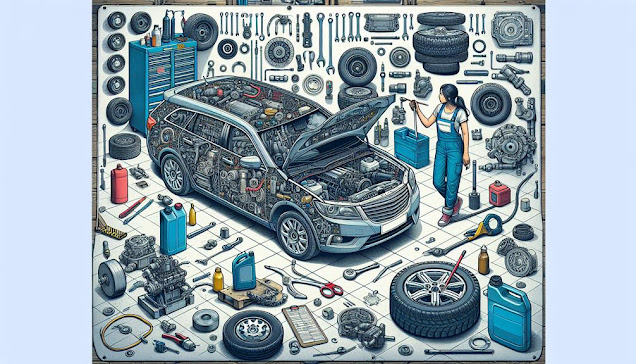Why Routine Brake Inspections Are Essential in Auto Repair
Within the realm of auto repair, regular brake checks play a critical role that simply can't be ignored. These assessments are vital for catching early signs of wear and deterioration within the hydraulic and mechanical components of the braking system. By carefully checking brake pad thickness, maintaining the cleanliness of the brake fluid, and promptly addressing any abnormalities, potential brake failures can be avoided. This proactive approach not only ensures optimal brake performance but also significantly enhances the safety of everyone on the road. But how exactly do these thorough inspections lead to real safety improvements, and what are the best methods for conducting them effectively?
Why Brake Checks Matter in Auto Repair
From a safety perspective, the importance of regular brake checks in auto repair cannot be emphasized enough. Brakes are the primary mechanism that allows a vehicle to slow down and stop, making them essential for accident prevention. Regular inspections are crucial to verify that the hydraulic and mechanical components—such as brake pads, rotors, calipers, and brake fluid—are all in proper working condition. Over time, these parts are subject to wear and tear caused by friction, heat, and moisture, potentially compromising the vehicle's braking efficiency.
Technically speaking, brake pads need to have a certain minimum thickness to function effectively. When they wear down past this point, the likelihood of brake failure rises dramatically. Similarly, maintaining clean brake fluid is vital, as contaminated fluid can lead to a reduction in hydraulic pressure, directly affecting brake performance. Routine checks can catch these issues early, allowing for timely repairs or replacements.
Culturally, in communities that emphasize safety and reliability, regular brake checks are seen as a collective duty. For car enthusiasts and auto repair professionals alike, routine brake maintenance isn't just about individual safety—it’s about contributing to a larger sense of communal responsibility. This shared commitment to vehicle care fosters a sense of unity and trust within the community, aligning with values of diligence and alertness.
Recognizing Brake Issues in Auto Repair
Spotting early signs of brake issues is key to maintaining both vehicle safety and performance. The braking system is a complex assembly, where even minor problems can significantly impact overall effectiveness. Common warning signs of potential brake trouble include strange noises, such as grinding or squealing, which often indicate worn-out brake pads.
A soft or spongy brake pedal can signal the presence of air in the brake lines or low brake fluid, both of which require immediate attention. Additionally, if you experience vibrations or pulsing through the brake pedal or steering wheel while braking, it could mean the rotors are warped. Such issues not only reduce braking efficiency but also affect the driver's control over the vehicle.
Dashboard warning lights are another critical alert that should never be ignored. In the automotive community, there is a shared understanding that recognizing these warning signs is a collective responsibility toward road safety. Regular communication and vigilance about brake health can build a sense of trust and community among vehicle owners. By quickly identifying and addressing brake problems, we contribute to a culture of safety, reliability, and mutual respect on the roads.
In the intricate world of automotive function, the braking system acts as the conductor, orchestrating both safety and control. Much like a maestro who cannot tolerate a single discordant note, the braking system must remain flawless. Regular brake checks, a fundamental aspect of auto repair, serve as vigilant protectors, identifying potential issues and ensuring smooth performance. By safeguarding this crucial component, we allow the road to become a stage where safe driving takes center stage, preserving the rhythm of life for all who journey upon it.



Comments
Post a Comment